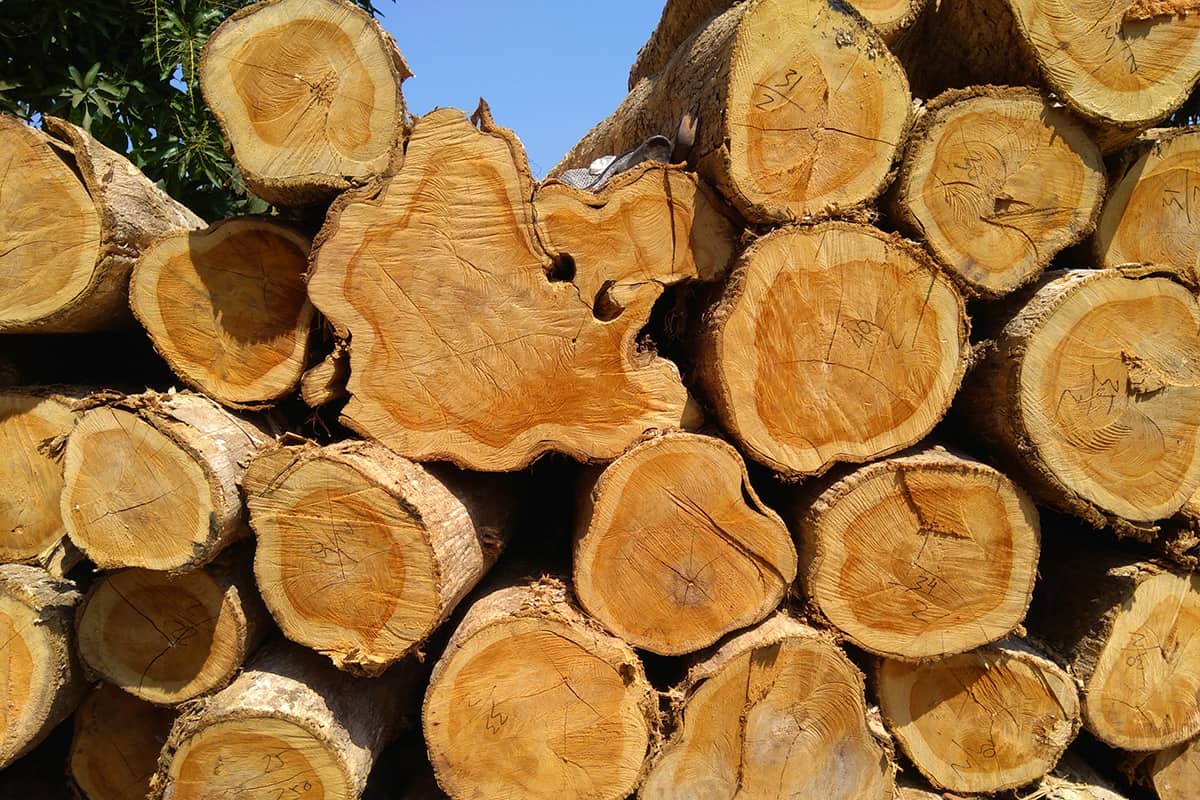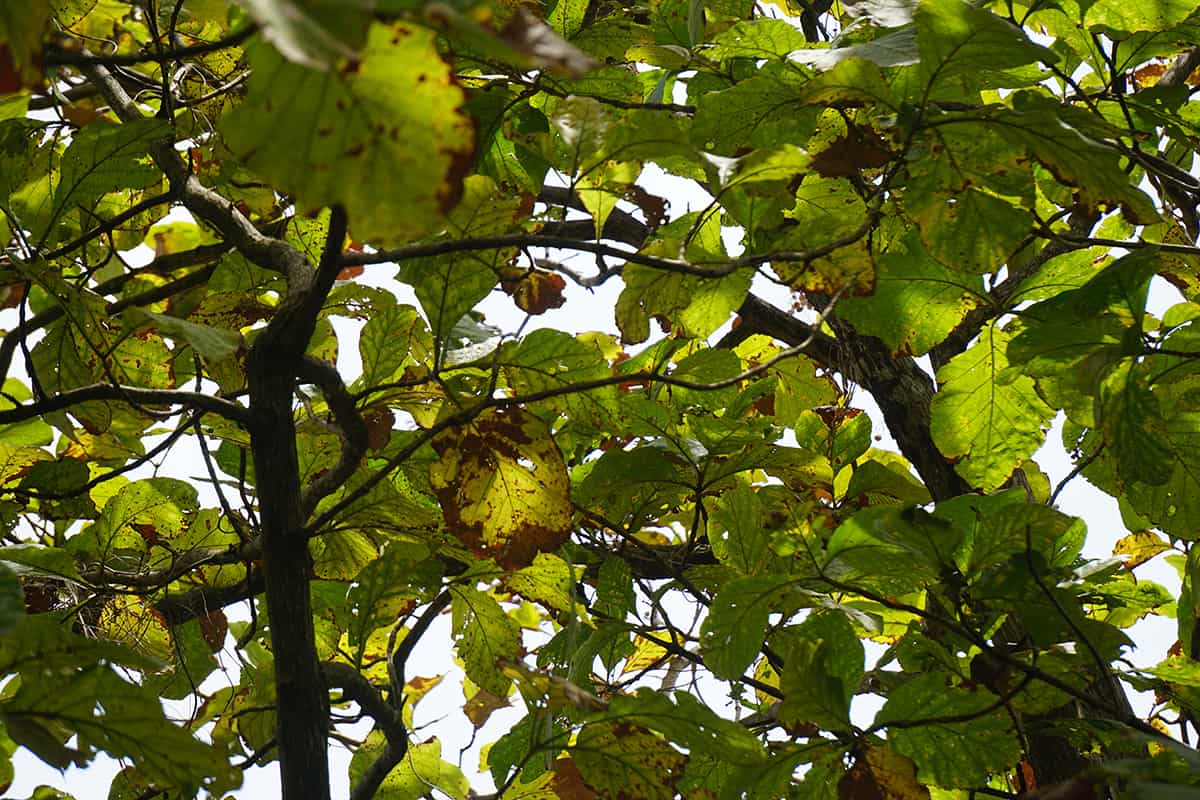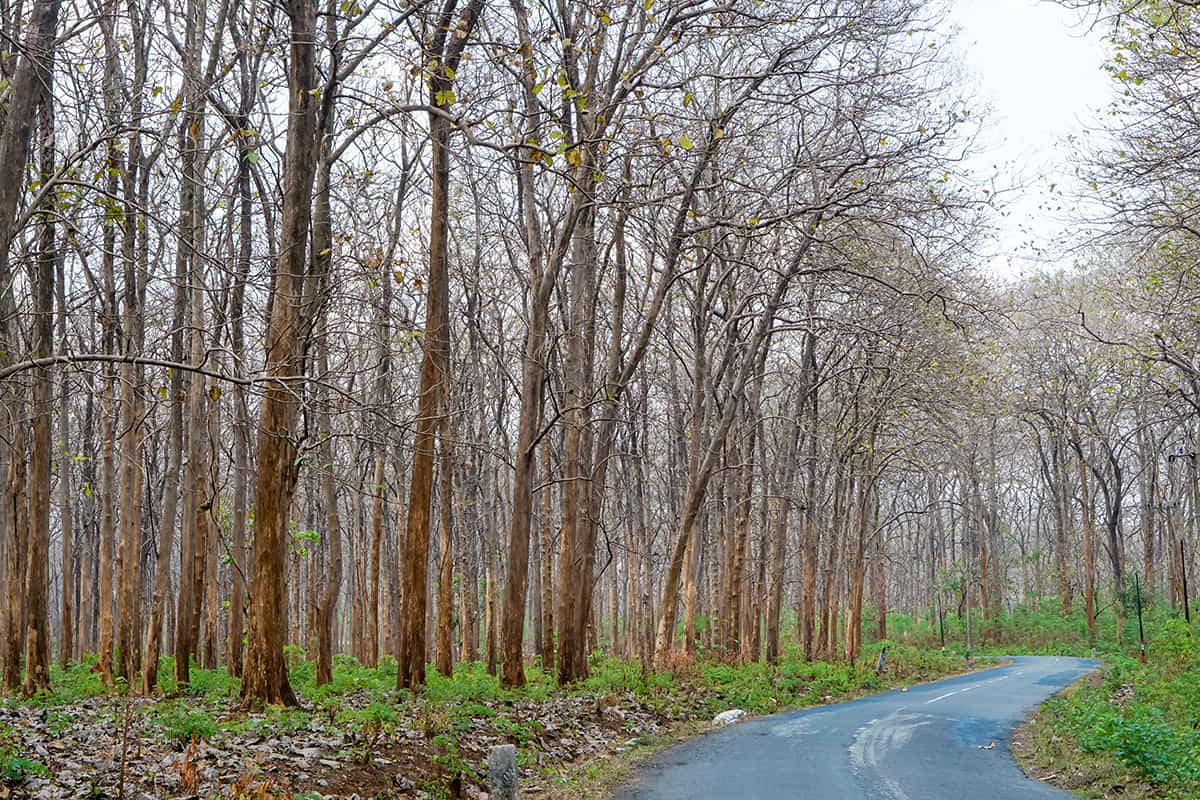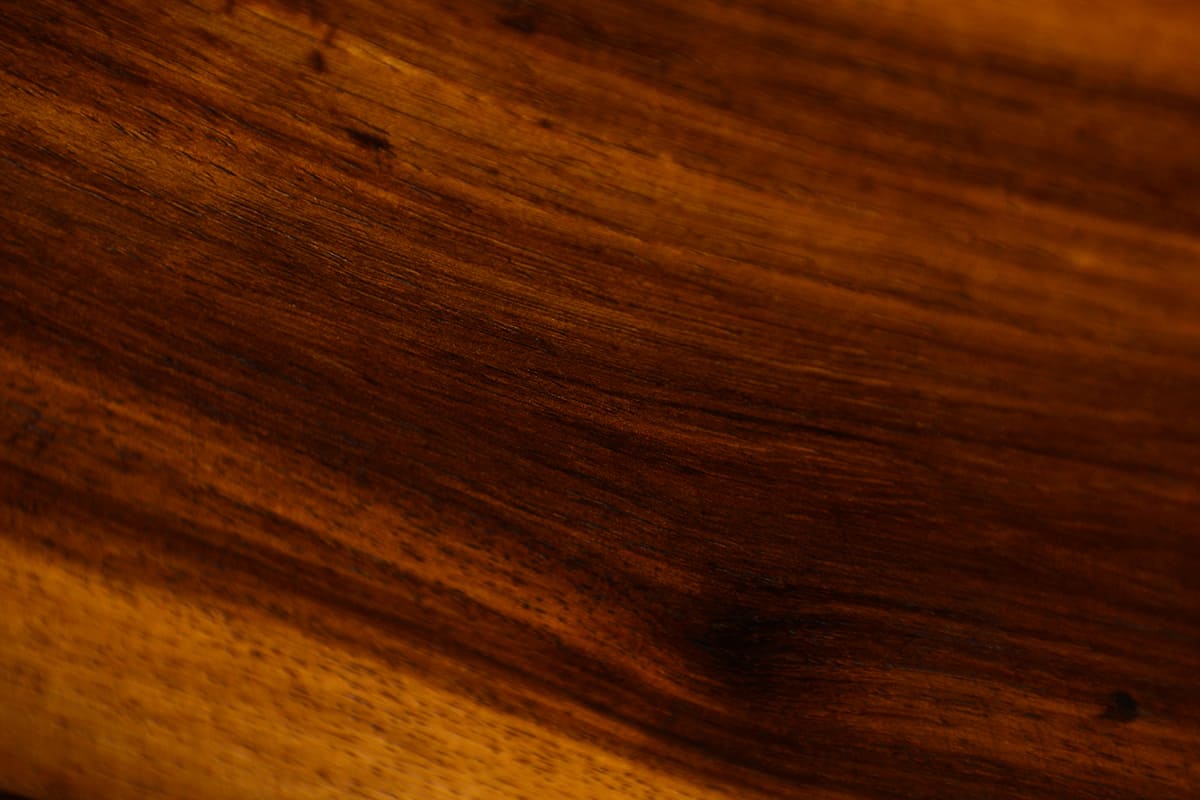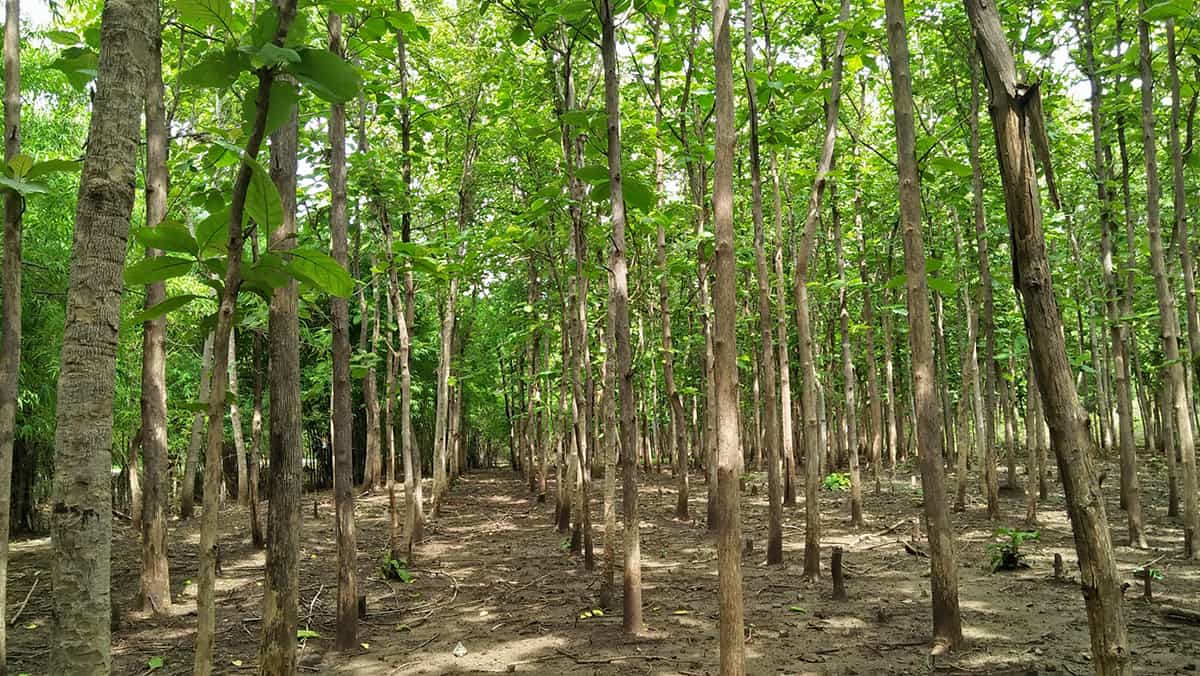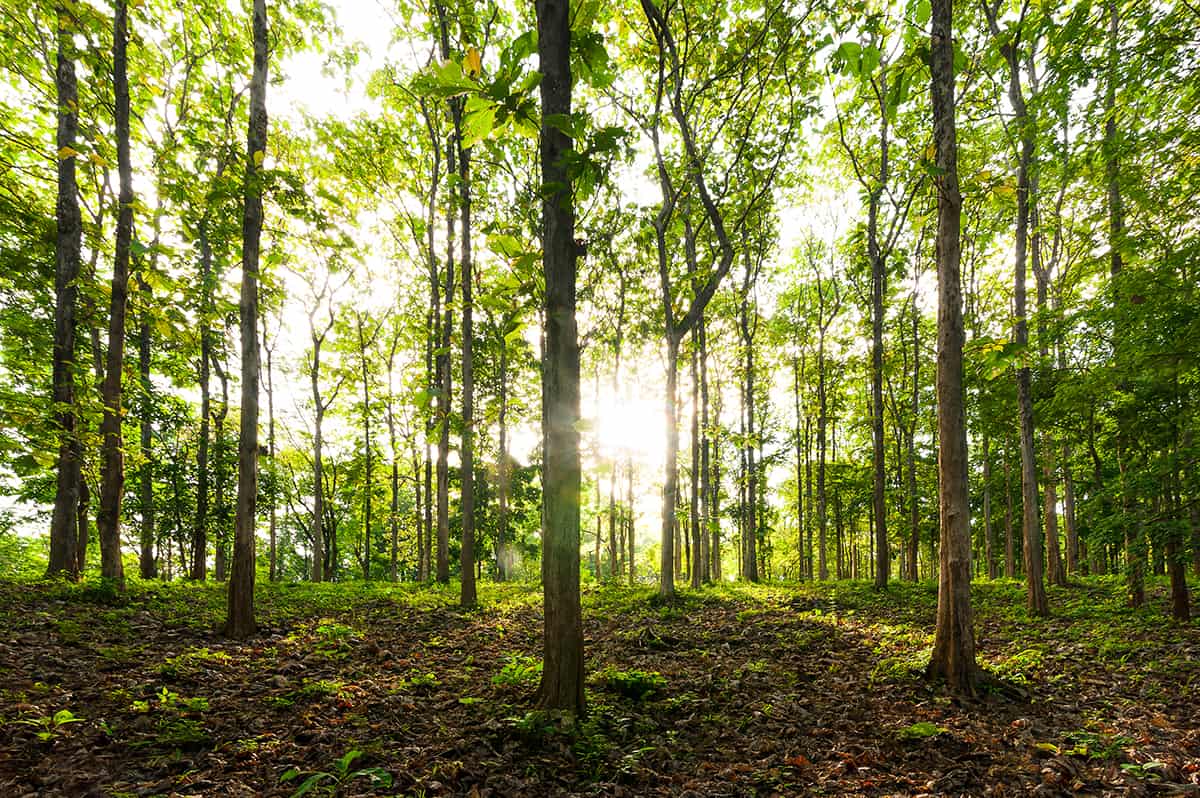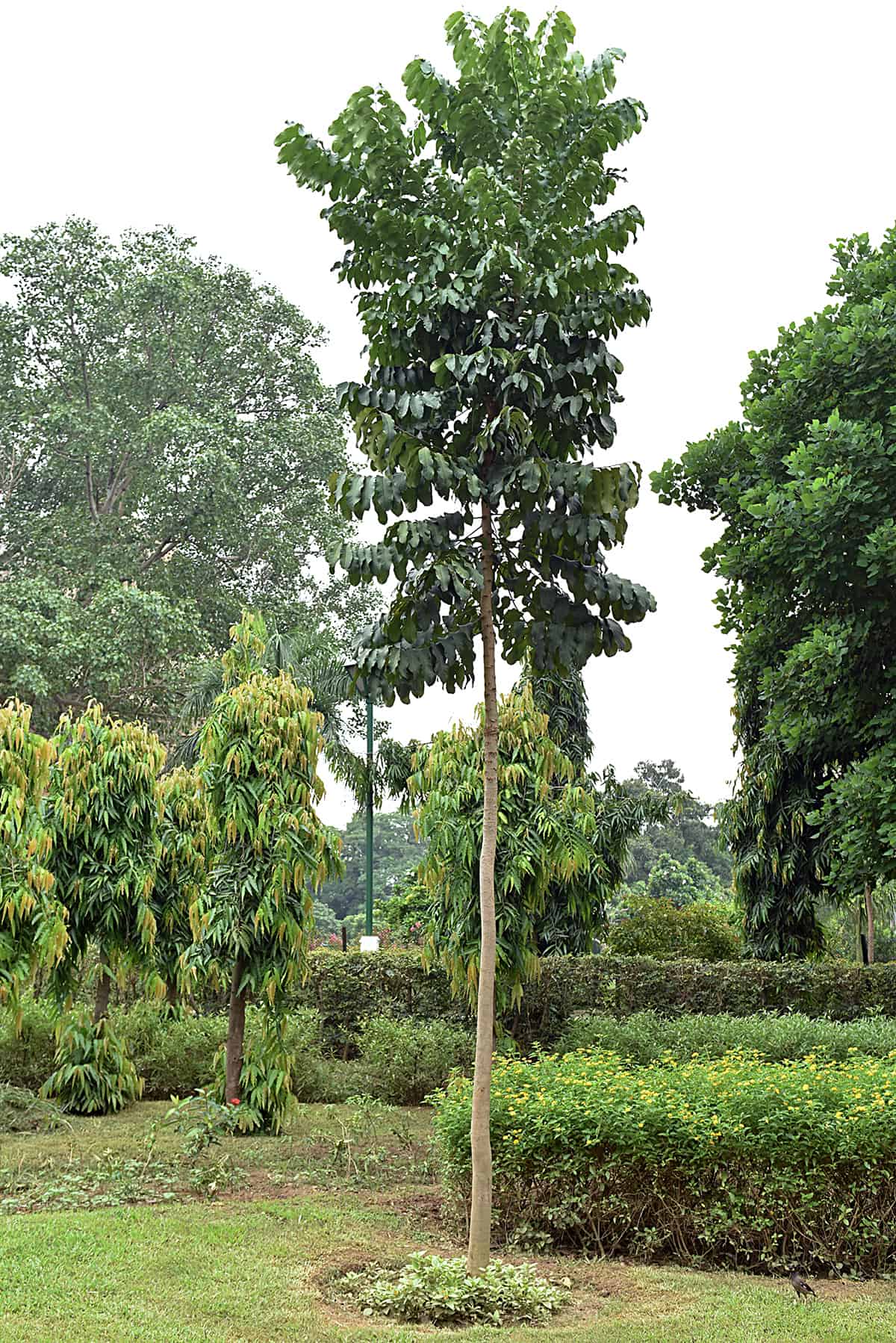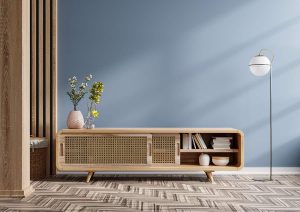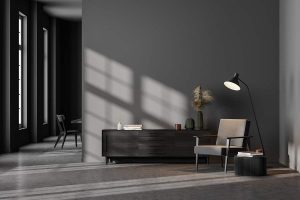Teak wood is produced from the teak tree, botanically known as Tectona grandis. It is a very sought-after type of wood since it is naturally weather-resistant and therefore makes for excellent garden furniture and other outdoor uses. Teak is also commonly used for interior decors, such as flooring, countertops, and paneling.
Benefits of Teak Wood
Teak wood has many qualities that make it a desirable type of wood for interior and exterior use.
Moisture resistant
Teak wood contains a high level of oils, which means it is able to naturally repel moisture, either from rain or humidity. This is one of the main reasons why teak is the preferred material for making outdoor furniture because it will not degrade even if left outside all year with no protection from the weather. The moisture-resistant quality of teak also means that it will not rot.
Pest resistant
Teak wood is resistant to pests since it contains an oil called tectoquinone, which is a natural pesticide. This means teak is a perfect choice of wood for furniture in areas where termites are a problem or as garden furniture which will not suffer any pest infestations.
Light and heat resistant
Teak is resistant to both light and heat, which means it will not expand or shrink in sunlight or fluctuating temperatures. The oil it contains allows a level of elasticity which means the wood will not crack if left outside like many other types of wood will.
Durable
Teak wood is known to be one of the strongest and most durable types of wood available, which is the result of the tight wood grain and the high level of oils it contains. The durability of teak makes it an ideal type of wood for many applications where both strength and water resistance are important, for example, in shipbuilding and the making of garden furniture.
Attractive color and grain
Good quality teak wood will come from the heartwood of mature trees, and you can recognize it by the deep golden brown color and the high presence of oils which will give the wood a natural luster that makes it look almost glossy.
Teak wood also has a straight, tight grain, which is aesthetically pleasing and a sign that the wood is strong and durable. Inferior teak wood will be taken from the sapwood or immature trees. It is easily distinguishable because it is pale or uneven in color, lacks the oily glossy finish, and will have a wider grain.
Teak Varieties
The teak tree is native to southeast and southern Asia, most notably Thailand, Sri Lanka, Malaysia, India, Bangladesh, Myanmar, and India. Teak wood produced from trees grown in these native regions is considered to be the best teak; however, the teak tree has been cultivated and naturalized across other parts of the world, including African countries.
Despite being the same type of tree, the wood produced from teak trees in different regions will have slightly different qualities because the growing conditions will affect the standard of the wood. The teak tree is a deciduous tree that reaches heights of between 120 feet and 150 feet.
This is not a slow-growing tree; however, it will take at least 25 years for a teak tree to reach maturity and be ready to be harvested for its wood. The time it takes to grow teak for its wood is one of the reasons why this type of wood is so expensive. There are also some types of wood that are marketed as ‘teak wood’ but are actually not produced from true teak trees.
True Teak
Burmese Teak
Burmese teak wood is known as such because it is grown in Myanmar, which is a country previously known as Burma. This is believed to be the best and most durable type of teak wood available, and consequently, it is almost the most expensive. These teak trees will typically reach 50 years of age and around 130 feet in height before they are harvested.
Burmese teak has heartwood that is a golden brown color, which will become deeper and darker as it ages. The grain of the wood is generally straight and even, though it can sometimes have a slightly wavy effect.
This type of teak contains a high concentration of natural oils, which results in the wood being extremely resistant to moisture and weather damage. Burmese teak is widely used for making outdoor furniture, shipbuilding, flooring, and veneer.
Indonesian Teak
Also known as Asian teak, this type of wood is produced from trees grown in Indonesia, a country in Southeast Asia. The growing conditions here are ideal for teak trees since Indonesia has a hot and humid climate with frequent rainfall.
The soil in Indonesia is known to be very fertile as a result of volcanic material, which also helps to produce high-quality teak trees. Indonesia teak is thought to be a very high quality of wood, second only to Burmese teak.
The trees are harvested at around 100 feet tall when they are approximately 30 years old. The wood produced by these trees has a light brown color with a slightly gray hue, and the grain is a little wider than that of Burmese teak.
African Plantation Teak
The teak trees on African plantations are grown here for the purpose of producing teak wood. The trees do not grow natively in this region of the world, which can affect the quality because the climate conditions are not perfect for teak trees.
These teak trees will be harvested after 15 years of age, which is not adequate time for the teak oils to have developed. This is one of the reasons why African plantation teak is not as high quality as the native teak wood because it has not been allowed to fully develop to gain weather resistance.
It is also less durable than Burmese or Indonesian teak wood; however, it is used for similar applications such as shipbuilding and veneer since it is still a heavy-duty type of wood. It has a paler brown color than the higher-quality teak wood and a wider grain.
South American Plantation Teak
The teak trees here, like those on the African plantations, are grown specifically in controlled conditions to produce teak wood. South American plantation teak is very difficult to distinguish from African plantation teak.
It will have a similar, fairly low level of oil as the African plantation teak, a similar paler brown color, and a similarly wide grain. It is not as durable as higher quality types of teak wood but still offers a good level of strength.
Indian Teak
Teak trees grow natively in India, and as such, the teak wood produced from these trees is similar in quality to Burmese teak. Teak trees grown in old forests in India are very valuable since the wood from these trees will be of a very high quality and therefore can be sold on for a high price.
Indian teak has a rich brown color and plenty of natural oils, which give it a lustrous look and make it weather resistant. Indian teak has seen sustained high demand, which unfortunately led to the overexploitation of the teak forests, and as a result, this type of teak is not available on the international market.
Thai Teak
This type of teak grows natively in Thailand, where conditions are known to be ideal for teak trees. As a result, Thai teak is believed to be the highest quality of teak wood on the planet, even superior to Burmese teak.
However, teak forests in Thailand were overexploited, and the trees are now on the endangered species list in this country. The logging of teak trees is illegal in Thailand, so there is no supply of Thai teak on the international or local market.
False Teak
African Teak
This is a type of wood that is commonly sold under the name ‘African teak,’ but the tree it comes from is not related to the teak tree. Instead, this wood comes from the Iroko tree, which is a hardwood tree grown on the west coast of Africa.
The wood from this tree does not resemble teak in a visual sense since it has no knots in the grain; however, it has comparable qualities because it offers good water resistance and is very durable. Iroko is commonly used as a teak substitute for the production of outdoor furniture, as well as for flooring, shipbuilding, and decking.
Chinese Teak
This is another type of ‘teak’ wood that does not come from a true teak tree; instead, it is sourced from Robinia trees, more commonly known as black locust trees. The wood from these trees is extremely hard to distinguish from true teak because it has a similar color and grain pattern.
It also offers similar weather-resistant qualities as real teak wood and is significantly less expensive. This can be a good alternative to teak if you want to keep your budget low.
